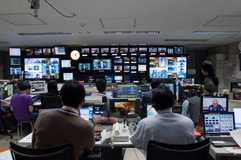NHK / Tokyo
At the scene
Following the March earthquake and tsunami, NHK, Japan’s public broadcaster, provided the footage that filled the world’s TV screens. Monocle visits the studios to find out what happened when the disaster drill became real.
There’s no how-to guide for most journalists to turn to during a natural disaster like the magnitude-nine earthquake and tsunami that hit Japan’s northeastern coast in March. That is, unless you work for Japan’s public broadcaster NHK. The company’s 51-page loose-leaf manual offers detailed instructions on everything from the basics of tectonics to the importance of keeping calm. And in case a volcano erupts or a typhoon slams the coastline, NHK has manuals for those, too. It’s a measure of how seriously the broadcaster takes disaster reporting.
To cover the recent quake, tsunami and nuclear crisis, NHK spared no expense, dispatching helicopters and assigning 1,200 reporters, cameramen and backup staff to the story. It also set up TVs in shelters so evacuees got the news. Nearly every major broadcaster around the globe used NHK’s footage from the disaster zone, winning NHK a global following. By late March, the NHK World Live TV application was the second most popular news application on iTunes’ US rankings, behind CNN but ahead of Fox News, the New York Times and BBC News.
When MONOCLE met Tamaki Imai, NHK’s executive managing director in charge of news and international broadcasting, he was surviving on five hours of sleep a night, putting in long hours in the newsroom in Tokyo.
Monocle: Explain how you covered the March 2011 quake and tsunami.
Tamaki Imai: The quake hit around 14.46. Within 50 seconds, we had information about it. By 14.48 we were airing reports. This earthquake tripped the Meteorological Agency’s warning system, which sends out an alert over our network seconds before the tremors. The agency soon tells us how powerful the quake is. If the tremors register between three and five on the Japanese seismic intensity scale [which measures the actual shaking rather than the intensity of the quake at its epicentre], we cut into the regular programming nationwide to report this. If it’s a two or lower, we only report it locally. If the quake is a six or higher, it triggers an emergency broadcasting mode that connects all of our TV and radio channels to the report from our main studio in Tokyo.
M: How did you get your helicopter to the scene so soon afterwards?
TI: Our helicopter left from Sendai Airport [in Miyagi prefecture]. The quake had damaged the runway and the airport was closed. But we made an urgent request to the control tower for permission to let our helicopter go up, and got approval. There were four other networks with helicopters at the airport, but they didn’t have cameramen ready to go.
M: That’s when you switched to a 24-hour news format?
TI: Our 24-hour news programming lasted a week, which was unprecedented. By 22 March – after 12 days of reporting – we had aired 254 hours of news. Our cameramen have been sending about 700 tapes a day worth of footage. We also used videos taken by viewers (see box, opposite).

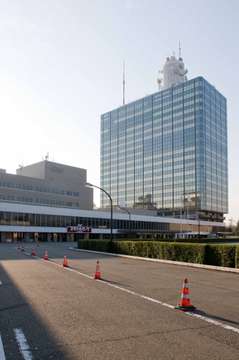

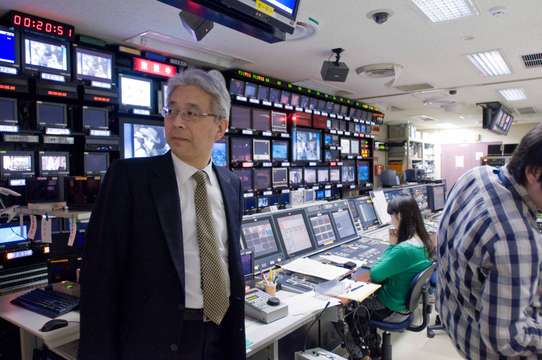
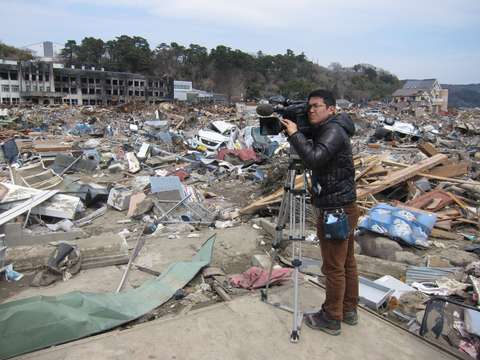
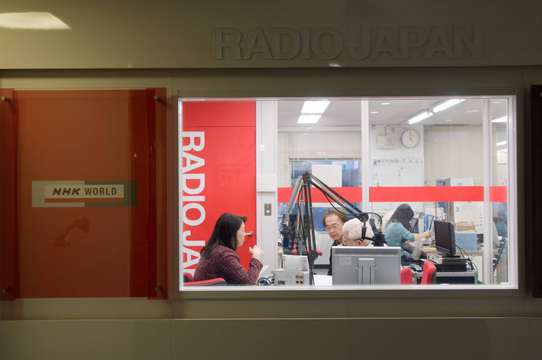
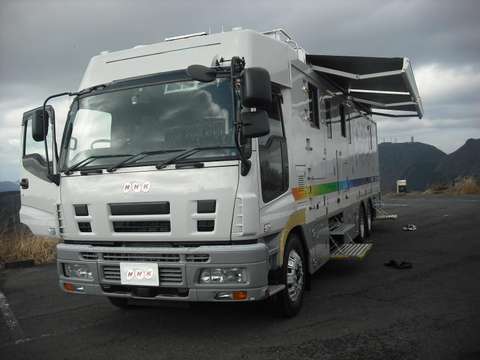

M: How many people are assigned to this story?
TI: We have five local broadcasting stations north of Tokyo, with a staff of 590 leading the coverage. We also sent 600 more people to help – not just reporters and camera crews, but also producers and engineers, sales and logistics staff.
M: What resources does NHK have for reporting on disasters?
TI: We have 14 helicopters at 12 heliports. Our helicopter in Shin-Kiba has a cameraman and pilot ready to fly on a moment’s notice, 24 hours a day. We also have 74 trucks and vans that can send live footage via a communications satellite. About 20 of them are on this story.
M: A government spokesman complained that news choppers were hampering rescue efforts. Did you stop flights?
TI: Our choppers initially flew along the coast to assess the damage. After troops and rescuers arrived, we didn’t cut back on flights but we tried to give them room to work. Our choppers were finding stranded survivors. We showed doctors and patients on the roof of a hospital, and passed on the information to rescuers.
M: How do you prepare your staff for a disaster?
TI: If there’s a major quake anywhere in Japan late at night, the news staff immediately head to the office. And every night after the midnight news report, about 20 of our Tokyo production staff and announcers run through a disaster drill. The same goes for our Osaka broadcasting centre, except that their drill involves stepping in for Tokyo as the national news hub.
M: What are these drills like?
TI: We assume there’s been a big earthquake. The staff prepare a mock script and an anchor reads through it. Reporters are on the phones to local officials. We did drills before the Kobe earthquake, but in the past 10 years we’ve been doing them more frequently.
For a day or two after the quake and tsunami, many broadcasters around the globe were relying on NHK almost exclusively for footage. I think a lot more people now know who we are.
M: Global broadcasters rely on big-name anchors. Why doesn’t NHK?
TI: We have no need for star anchors. During our round-the-clock broadcasts, our anchors worked in one-hour shifts.
M: Did NHK understate the crisis? Correspondents like CNN’s Anderson Cooper described the nuclear accident in catastrophic terms.
TI: I can understand their response. If I were working in the US and the Three-Mile Island accident happened, I would send my family back to Japan. But we are in a tough position. We have to report rising radiation levels, but we don’t want to set off a panic. We make sure we have experts on hand to explain the news.
M: It was surprising how patient people were after the quake.
TI: We’re used to disasters. The Tohoku people have patience and perseverance. Even Japanese viewers were moved when we saw people who had lost everything waiting in long, orderly lines after supplies finally arrived.
M: Why hasn’t anyone told the story of the “Fukushima 50”, the workers who are risking their lives to prevent a meltdown at the nuclear plant?
TI: They don’t have time to talk about what’s going on. We have focused on former workers and fire fighters who set up equipment to douse the reactors. We plan to talk to the workers later.
M: Has the government told us all it knows about the radioactivity?
TI: We have to trust the government to be truthful. It might be hiding some things. Our reporters constantly demand to know more. We can also put pressure on by interviewing local officials.
M: Your reports show no dead bodies. Why not?
TI: We have lots of footage of people and cars being swept away by the tsunami, but we won’t use that. It’s too insensitive.
M: Does NHK have a civic role that goes beyond reporting?
TI: We want to stand with the disaster victims. We need to keep the coverage focused on how to get aid to people, how to rebuild homes. Once things calm down, we must take a good look at the administration’s response to the crisis.
Broadcaster at the ready
NHK’s preparedness is akin to that of an emergency service. Its investment in state-of-the-art hardware pays off when it comes to fast deployment. Yet while news choppers and satellite trucks may be impressive, NHK’s journalists and bureaux are its vital, old-fashioned news-gathering lifeblood.
In comparison to NHK’s hardware, its rivals lag behind. While 40 foreign bureaux feed the BBC’s news appetite, the corporation rents helicopters and satellite trucks as and when it needs them. CNN’s Atlanta base is served by 14 US and 31 foreign bureaux, again they rent choppers and satellite trucks for overseas endeavours.
Choose your news
Japan’s public broadcaster NHK has an hourly news update, but it’s no 24-hour TV news station like BBC or CNN. Yet you won’t hear many Japanese complaining. They have many other options: five national dailies with morning and evening editions, dozens of local papers, and user-generated news websites like 2channel, not to mention real-time alerts for mobile phones.

